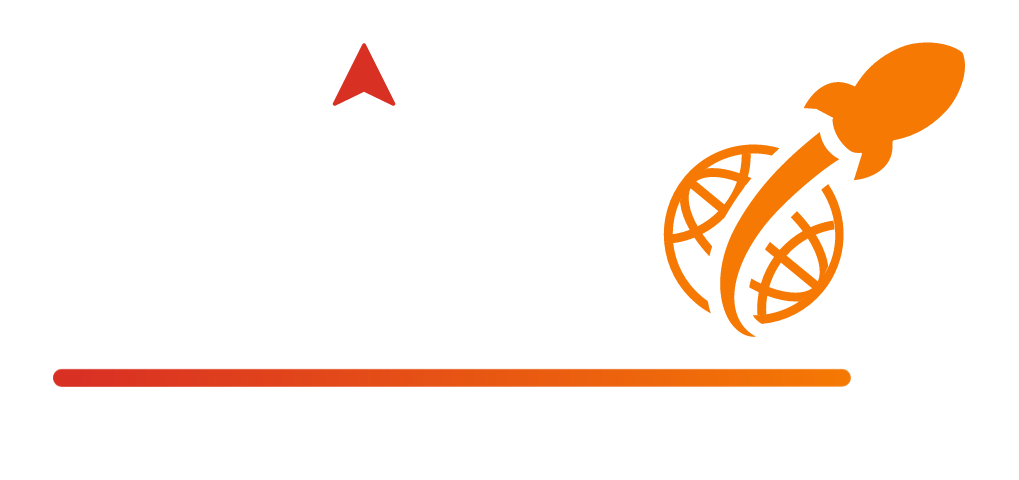Web development is set to evolve significantly by 2025. Expect advancements like Progressive Web Apps (PWAs), AI-powered tools, voice search optimization, and AR/VR integration to shape the landscape, driven by innovative development processes that enhance efficiency and effectiveness. This article explores these trends and what they mean for developers and businesses. Let’s dive into the future of web development: what to expect in 2025.
Key Takeaways
- Web development is evolving with trends like Progressive Web Apps, AI automation, and voice search optimization, set to redefine user experiences by 2025.
- Adoption of advanced technologies such as 5G, AI, AR, VR, and serverless architecture is transforming the efficiency and interactivity of web applications.
- Integration of mobile and web applications is crucial in mobile-first development strategies, ensuring a seamless and consistent user experience across various devices.
- Enhanced cybersecurity measures and sustainability practices are emerging as crucial priorities, ensuring security and reducing environmental impact in web development.
Evolution of Web Development

The inception of web development can be traced back to the late 1980s, when Tim Berners-Lee conceived the idea of the World Wide Web as a method for researchers to easily exchange information. This groundbreaking concept led to him crafting the inaugural version of HTML in 1991—a key language responsible for structuring web pages and integrating hyperlinks.
Throughout the progression of the 1990s, significant advancements occurred within the web development process. The introduction of JavaScript during this decade allowed developers to write code for generating dynamic and interactive online content. Shortly after, CSS was rolled out in 1996, facilitating uniform design across different web pages by distinguishing between content and its presentation style. With time’s passage into late ‘90s and early ‘00s marked by burgeoning user-generated content along with social connectivity features, came Web 2.0. Thus transforming erstwhile static HTML websites into vibrant platforms focused on user engagement.
Spurring yet another transformative wave upon it’s release in 2007 was Apple’s iPhone—prompting essential advances such as responsive design that caters to diverse device screen sizes in mobile technology ecosystems—and setting contemporary standards for site construction which now routinely leverages frameworks like React or Angular intended both simplify interactivity build-out processes while simultaneously enriching end-user experiences. These developments have collectively shaped simple text-driven sites towards becoming richly-interactive hubs anticipating what lies ahead for future website production trends.
Current Landscape of Web Development
In the current landscape of web development, state-of-the-art technologies significantly improve speed, effectiveness, and overall user interaction. Practices such as integrating a web app to leverage animations and dynamic components, reducing code size, and implementing caching are instrumental in elevating website performance to ensure swift loading times and seamless operation. The emergence of Progressive Web Apps (PWAs) has propelled the sector forward by offering an economical solution for developing applications that engage users effectively.
Integrating AI with automation is revolutionizing how websites are crafted—streamlining the development process while also increasing productivity. Embracing an API-First design philosophy is becoming more popular among developers looking to forge robust and expandable web infrastructures.
With a continued emphasis on tailoring sites for mobile access and refining page experiences, optimizing the velocity at which websites operate remains essential. This dedication helps bolster both user involvement and contentment within digital spaces.
Emerging Trends in Web Development for 2025

The web development landscape brims with potential thanks to the advent of groundbreaking innovations. As we look ahead, transformative developments such as Progressive Web Apps (PWAs), AI-powered tools, and strategies for optimizing voice search are poised to revolutionize how we build and engage with web apps. These emerging trends, propelled by swift advances in technology, are expected to exert a significant impact on the web development industry.
As mobile usage continues its ascent, responsive design becomes increasingly pivotal due to the surge of internet access via mobile devices. The fusion of AI alongside augmented reality (AR) and virtual reality (VR) is also anticipated to amplify user interaction while bringing forth more immersive experiences that cater to user preferences.
Delving into these current movements underscores a future where innovation in technological frameworks harmonizes with designs that prioritize users’ needs at their core — charting an exciting course for what lies ahead in web application evolution.
Progressive Web Apps (PWAs)
Progressive Web Apps (PWAs) are transforming the landscape of web development by providing an experience similar to native mobile apps, including features such as push notifications and offline access. These applications boast rapid load times, smooth user interactions, and the capacity to operate without internet connectivity – presenting a compelling alternative to conventional web applications. With the rollout of 5G technology imminent, PWAs stand poised for Enhancement in their performance on diverse devices.
The incorporation of PWAs is increasingly popular among companies seeking to bolster user engagement and elevate conversion rates. Notably, businesses can use targeted push notifications as a strategic tool for encouraging users with unpurchased items in their shopping carts, potentially increasing sales figures.
In anticipation of future trends in web development, it becomes clear that there will be an even greater convergence between traditional web apps, native mobile apps, and Progressive Web Apps. This amalgamation signifies a movement towards hybrid solutions known for their adaptability and efficacy within both mobile and web platforms.
AI-Powered Tools and Automation
The incorporation of artificial intelligence and machine learning is revolutionizing the web development process, ranging from generating code to scrutinizing user behavior. AI tools have the capability to streamline repetitive tasks, enhance performance, and deliver insights derived from data that elevate user experiences. As these AI technologies evolve, it will be essential for web developers to adjust by acquiring new competencies and adopting different workflows.
For instance, AI-enhanced chatbots can drastically refine interactions with users by offering prompt replies to their inquiries. This not only reduces the likelihood of visitors leaving, but also boosts overall engagement with users. The use of AI in the realm of web development is anticipated to see a surge in adoption, which underscores its transformative impact on this field.
By integrating such state-of-the-art technologies into their practices, those who work in web development are steering towards an era where processes are more streamlined, efficient and focused on delivering a superior experience tailored around end-user needs.
Voice Search Optimization
As voice search gains prominence in the digital sphere, web developers are recognizing its critical role in web development. The market for voice search assistants is anticipated to surge to a valuation of $11.2 billion by 2026, highlighting the escalating significance of refining web content for voice queries. Developers are tasked with crafting succinct and straightforward content that resonates with spoken language and addresses user intent, all in response to this advancing trend.
The implementation of natural language processing (NLP) is pivotal for optimizing websites for voice search as it enables them to comprehend and react aptly to user inquiries. By evaluating patterns in user behavior and adapting website content so that it echoes conversational tones, enterprises can significantly boost their site’s performance while simultaneously heightening levels of user engagement.
With its rising impact on the online environment, making websites compatible with voice searches has become an indispensable strategy for maintaining competitiveness within today’s evolving technological landscape.
Machine Learning and Core Web Vitals
Machine learning is revolutionizing the web development process by enabling developers to create more personalized and engaging user experiences. At the heart of this transformation are Core Web Vitals, a set of metrics introduced by Google to evaluate the quality of user experiences online. These metrics focus on three critical aspects: speed, responsiveness, and visual stability.
By leveraging machine learning, web developers can optimize their websites to meet these Core Web Vitals, thereby enhancing user experience and improving search engine rankings. Machine learning algorithms can analyze user behavior, preferences, and interactions, providing invaluable insights that can be used to refine and enhance web applications. This data-driven approach allows developers to create more effective and engaging user experiences, ultimately driving business success.
Core Web Vitals, which include Cumulative Layout Shift (CLS), First Input Delay (FID), and Largest Contentful Paint (LCP), are essential benchmarks in the web development process. Optimizing for these metrics ensures that websites load quickly, respond promptly to user inputs, and maintain visual stability, all of which are crucial for user satisfaction. Machine learning can automate the optimization of these metrics, freeing up developers to focus on more complex and creative tasks.
Incorporating machine learning into the web development process not only streamlines routine tasks but also enhances the overall quality of web applications. As we move towards 2025, the integration of machine learning and Core Web Vitals will be pivotal in creating superior user experiences and maintaining competitive advantage in the web development industry.
Mobile-First Development
Mobile-first development is a pivotal trend in the web development landscape, ensuring that websites are designed and optimized primarily for mobile devices. This approach acknowledges the growing number of users who access the internet via smartphones and tablets, making it essential to prioritize the user experience on smaller screens.
By adopting a mobile-first strategy, developers can create more streamlined and intuitive user experiences that translate well to larger screens. This involves several key considerations:
- Simplifying Navigation and Content: Given the limited screen real estate on mobile devices, it’s crucial to streamline navigation and prioritize essential content. This ensures that users can easily find what they need without unnecessary clutter.
- Optimizing Images and Media: Mobile devices often have slower internet connections compared to desktops. Optimizing images and media for faster loading times is essential to maintain a smooth user experience.
- Ensuring Touch-Friendly Interactions: Mobile devices rely on touch-based interactions. Designing touch-friendly interfaces with appropriately sized buttons and interactive elements enhances usability.
- Responsive Design: A responsive design ensures that the website adapts seamlessly to different screen sizes and orientations, providing a consistent user experience across all devices.
By focusing on mobile-first development, web developers can create websites that are not only more accessible and user-friendly but also optimized for the majority of internet users who access the web through mobile devices.
Advanced Web Technologies

The evolution of web development is poised to be significantly shaped by cutting-edge web technologies, including mobile and web applications, that aim to elevate user interaction and refine the development process. Artificial intelligence (AI) along with machine learning algorithms are progressively being incorporated into systems in order to anticipate user needs and customize online experiences. The deployment of augmented reality (AR) alongside virtual reality (VR) has begun paving the way for websites that offer more captivating and interactive environments.
Ensuring cross-browser functionality as well as optimizing performance continue to pose formidable challenges within these developing technologies. Nevertheless, with ongoing advancements in AR and VR capabilities, they will likely become indispensable instruments within web development practice, giving rise to user interfaces designed around unique individual preferences.
These advanced technological innovations promise a transformation of both the traditional web development process as well as overarching developmental methodologies—heralding an era characterized by sophisticatedly dynamic and engaging digital platforms across various online applications.
Augmented Reality (AR) and Virtual Reality (VR)
Augmented Reality (AR) and Virtual Reality (VR) have revolutionized user engagement by forging captivating environments that far surpass the interactivity offered by conventional web applications. For instance, AR-powered web applications can empower users to envision products within their actual surroundings, thereby enriching the online shopping experience. Conversely, VR has the ability to whisk users away into entirely new realms, which is perfect for hosting virtual gatherings or conferences.
As these technologies continue to evolve, they are poised to become essential elements in web development, offering more tailored and dynamic user interfaces. The incorporation of Artificial Intelligence (AI) will elevate AR and VR platforms even Enabling them to become formidable instruments in crafting interactive and absorbing web-based experiences.
Serverless Architecture
The adoption of serverless architecture is transforming the web development landscape by eliminating the necessity to handle server infrastructure. Utilizing cloud services that autonomously provision resources frees developers from the burden of server upkeep, allowing them to concentrate on crafting code. This simplifies complexities and cuts down costs while making it simpler to scale web applications economically in response to user needs, a feature that has garnered favor with numerous enterprises.
Embracing serverless architecture represents a move towards more resourceful practices within web development, empowering developers to deliver smooth user experiences unhindered by conventional maintenance duties. As this technology gains traction among businesses, it’s poised to become an established norm in the field of web development, propelling forward both innovation and operational effectiveness.
WebAssembly
Web assembly is becoming increasingly vital in the evolution of web development as it allows for the rapid execution of web applications by compiling code into bytecode. This innovation enhances app performance by reducing load times and improving responsiveness, which are critical components for delivering a seamless user experience. WebAssembly’s platform neutrality and robust security features make it an attractive option across various web application projects.
One notable benefit of WebAssembly is its support for coding in numerous programming languages, offering developers greater versatility and expedited development timelines. As technology continues to advance, WebAssembly is poised to become a fundamental element within the development process, empowering developers to craft high-performance web applications with greater efficiency.
No-Code and Low-Code Platforms
Platforms utilizing no code and low code are transforming web development into a more inclusive domain, enabling people of diverse abilities to partake in the creation process. Through intuitive drag-and-drop interfaces and ready-to-use components, these platforms simplify the development process by empowering users to construct websites without needing to write code, contrasting with traditional methods that require in-depth programming expertise. It is anticipated that this movement will expand Promoting greater inclusivity within web development.
Despite their advantages for swift development and initial prototyping phases, no-code and low-code platforms should not be viewed as absolute replacements for conventional coding practices when it comes to intricate functionalities or applications demanding high performance levels. The expertise of professional developers remains vital for the crafting and upkeep of complex web applications, even when using a no code app builder.
As they progress over time, these user-friendly platforms are expected to serve as complementary tools alongside traditional methods in web development. Together offering an integrative strategy towards developing substantial and proficient online solutions.
Enhanced Cybersecurity Measures
Amidst escalating online security threats, bolstering cybersecurity has become a principal concern in the realm of web development. Companies are adopting more sophisticated defense measures such as two-step verification, secure socket layer encryption, and artificial intelligence-powered systems to shield customer data. AI-powered systems can analyze user preferences to enhance security by personalizing protection measures. The acquisition of SSL certificates is fundamental for reinforcing site security and fostering trust among users.
By the year 2025, it is anticipated that robust encryption methods and AI-infused threat identification tools will be indispensable for maintaining website integrity. These advanced technologies will offer real-time monitoring capabilities, serving as an extra safeguard against cyber breaches.
As the web development sector progresses, emphasising strong cybersecurity strategies remains critical to preserve user reliance and defend delicate information against potential cyber risks.
Data Compliance
In the realm of web development, data compliance has emerged as a critical concern, ensuring that websites and web applications handle user data securely and responsibly. With the increasing importance of data protection and privacy, web developers must prioritize data compliance to mitigate potential risks and safeguard their reputation.
Key considerations for data compliance include:
- Implementing Robust Security Measures: Protecting user data from breaches and unauthorized access is paramount. This involves using encryption, secure socket layers (SSL), and other advanced security protocols.
- Transparency and Clear Communication: Users should be informed about what data is being collected, how it will be used, and who it will be shared with. Clear and concise privacy policies help build trust.
- Obtaining Explicit User Consent: Before collecting or processing user data, it’s essential to obtain explicit consent. This ensures that users are aware of and agree to the data practices.
- Compliance with Regulations: Adhering to relevant data protection regulations, such as the General Data Protection Regulation (GDPR) and the California Consumer Privacy Act (CCPA), is crucial. These regulations set standards for data handling and user rights.
By prioritizing data compliance, web developers can build trust with users, protect sensitive information, and maintain a positive reputation in the industry. Ensuring data compliance is not just a legal obligation but also a best practice that enhances user confidence and loyalty.
The Role of 5G Technology

The introduction of 5G technology is poised to dramatically transform the realm of web development by providing significantly enhanced download speeds and a reduction in latency compared to its predecessor, 4G. These swift technological advancements are expected to foster the creation of more engaging and dynamic websites and applications, thereby improving overall online performance. The minimal delay attributed to 5G will allow for instantaneous interactions on web platforms, enabling features such as real-time collaboration and immediate feedback mechanisms.
It’s imperative for web developers to modify their content so that it can harness the advantages offered by 5G while also maintaining functionality across older network technologies. This necessitates developing responsive designs that accommodate various internet connection speeds.
The robust capacity of 5G technology in terms of data throughput will aid in integrating high-fidelity media components like 4K visuals and augmented reality features into web applications with greater ease. As widespread implementation unfolds, this evolution within mobile networking stands ready not only to propel forward innovation within website construction but also markedly improve user engagement experiences online.
Sustainability in Web Development
In the realm of web development, prioritizing sustainability through efficient development processes is increasingly paramount as developers strive to diminish the carbon footprint associated with websites and applications. Providers of green hosting employ renewable energy sources and strategically optimize their server placements to reduce power usage. Opting for darker color schemes in website design can lead to lower requirements for screen brightness, thereby conserving energy.
Embracing vector graphics over heavy high-resolution images can notably decrease the amount of server energy required, supporting sustainable practices. Employing minimalist designs not only bolsters efficiency but also curtails the overall consumption of energy—this approach delivers dual benefits by enhancing both environmental wellbeing and user experience.
Adopting eco-friendly methodologies within web development goes beyond meeting ecological objectives. It concurrently augments website functionality and elevates levels of user contentment.
Multiple Platforms and Devices
In today’s digital age, users interact with websites and web applications across a multitude of platforms and devices. This reality necessitates that web development adapts to ensure accessibility, responsiveness, and engagement across various devices and platforms.
Progressive Web Apps (PWAs) are at the forefront of this trend, enabling developers to create web applications that deliver a native app-like experience across multiple platforms and devices. PWAs offer features such as push notifications, offline capability, and home screen installation, making them an indispensable tool for businesses aiming to create interactive and engaging web applications. By leveraging PWAs, developers can ensure that their web apps provide a seamless user experience, regardless of the device or platform being used.
Mobile-first development is another critical aspect of modern web development. This approach prioritizes the design and optimization of websites and web applications for mobile devices first, before scaling up to larger screens. Given the increasing prevalence of mobile internet usage, this strategy ensures that web applications are accessible, responsive, and engaging on mobile devices, which is crucial for user satisfaction and retention.
By focusing on creating web applications that perform well across multiple platforms and devices, developers can enhance user engagement and satisfaction. As we look towards 2025, the ability to deliver consistent and high-quality user experiences across various devices will be a key determinant of success in the web development industry.
Cloud Computing and API-First Development
Cloud computing is reshaping the web development landscape by offering developers the tools to create more efficient, scalable, and secure web applications. Alongside this, API-first development is emerging as a crucial trend, emphasizing the creation of robust APIs as the foundation of web applications.
The benefits of cloud computing in web development are manifold. It provides scalability, allowing web applications to handle varying loads efficiently. It offers flexibility, enabling developers to deploy and manage applications with ease. Additionally, cloud computing is cost-effective, reducing the need for extensive on-premises infrastructure. By leveraging cloud computing, developers can create web applications that are not only more efficient and responsive but also more engaging, thereby driving business success.
API-first development is essential for building web applications that are scalable, maintainable, and efficient. By prioritizing the development of APIs, developers can ensure that their web applications are flexible and adaptable to changing user needs and preferences. This approach allows for the seamless integration of various services and functionalities, enhancing the overall user experience.
As we move towards 2025, the combination of cloud computing and API-first development will be instrumental in shaping the future of web development. These trends will enable developers to create web applications that are not only high-performing and secure but also capable of meeting the evolving demands of users. Embracing these technologies will be key to staying competitive in the ever-evolving web development industry.
Future Predictions and Salary Trends
The future of web development is brimming with exciting possibilities, driven by emerging technologies, trends, and innovations. As the industry continues to evolve, web developers can expect new opportunities and challenges to arise.
Preparing for the Future: Tips for Web Developers

Maintaining relevance in the ever-changing web development field necessitates that developers continually learn and adapt. Developers can keep abreast of fresh software developments and current trends within the industry by regularly engaging with resources such as blogs, social media platforms, and podcasts. By allocating specific time frames for this purpose, they can avoid distractions while ensuring their expertise remains up-to-date, including their ability to write code effectively.
Developers who are driven by curiosity, capable of adapting to change, and dedicated to lifelong learning will be well-equipped to succeed amidst future shifts in the web development landscape. Taking initiative in ongoing education and being informed about prevailing tendencies not only enhances job security, but also opens doors for career progression. Adopting these habits positions developers at the forefront of progress within the dynamic realm of web development.
Expert Web Development Solutions by INICIO.ONE
INICIO.ONE delivers bespoke web development services designed to address the specific requirements of diverse businesses. Their offerings encompass tailored website creation, designs that adapt responsively to mobile and web applications, and specialized e-commerce platform development to provide a consistent user experience on any device. INICIO.ONE excels in CMS implementation which simplifies site management for enterprises through popular platforms such as WordPress and Shopify.
The firm also extends its proficiency towards developing web applications optimized for search engines by refining code and architecture to improve visibility in search engine results pages (SERPs). They assure sustained assistance with website maintenance and support post-launch, keeping sites secure while ensuring they remain current with the latest updates.
Adopting a strategy that combines state-of-the-art technological solutions with an emphasis on user engagement, INICIO.ONE commits itself to delivering top-tier web development outcomes poised at bolstering business growth and amplifying brand recognition.
Summary
In essence, the trajectory of web development is set for an exciting and transformative period ahead. The journey from the early stages of the Internet to today’s emphasis on rapidity, efficacy, and user-focused design illustrates significant progress in this field. We are witnessing a paradigm shift with the advent of Progressive Web Apps (PWAs), AI-powered tools, and voice search optimization fundamentally altering our interaction with web apps. Cutting-edge technologies such as augmented reality (AR), virtual reality (VR), serverless computing frameworks, and WebAssembly will drive momentum within the industry.
Looking forward to what lies ahead for web developers requires an unwavering commitment to perpetual learning and adaptability to keep abreast with technological advancements. Embracing eco-friendly practices while bolstering cybersecurity protocols coupled with exploiting 5G technology paves the way toward more proficient, secure, and immersive online experiences. This evolution marks not an end, but rather a continual process of innovation that upholds web development as both dynamic and exhilarating. Let’s remain at its forefront by fostering creativity to ensure its ongoing vibrancy.
Frequently Asked Questions
What web development services does INICIO.ONE offer?
INICIO.ONE provides custom website development, e-commerce solutions, CMS development, web application development, and SEO-friendly website optimization.
Do you provide website maintenance and support?
Yes, we offer ongoing website maintenance, updates, and security enhancements to keep your website running smoothly.
How long does it take to develop a website with INICIO.ONE?
The timeline depends on the project scope. A basic website may take a few weeks, while complex web applications require more time.
What are Progressive Web Apps (PWAs) and why are they important?
PWAs offer an experience similar to native applications, complete with advantages such as the ability to function offline and send push notifications. These features are essential for ensuring swift and uninterrupted user experiences.
Due to their effectiveness and adaptability, Progressive Web Apps stand out as a formidable option when compared to conventional web apps.
What industries do you serve with your web development solutions?
We cater to various industries, including e-commerce, healthcare, finance, education, real estate, and more.
Why is sustainability important in web development?
Sustainability in web development is crucial as it minimizes the carbon footprint while improving user experience and website performance.
Practices such as green hosting and optimized design contribute to a healthier environment and efficient applications.
How can web developers prepare for the future?
Web developers must embrace a dedication to ongoing education and flexibility, making use of key industry materials such as blogs and podcasts.
By taking this initiative, they can keep abreast of evolving trends which will help in maintaining their employability and opening doors for career growth.




